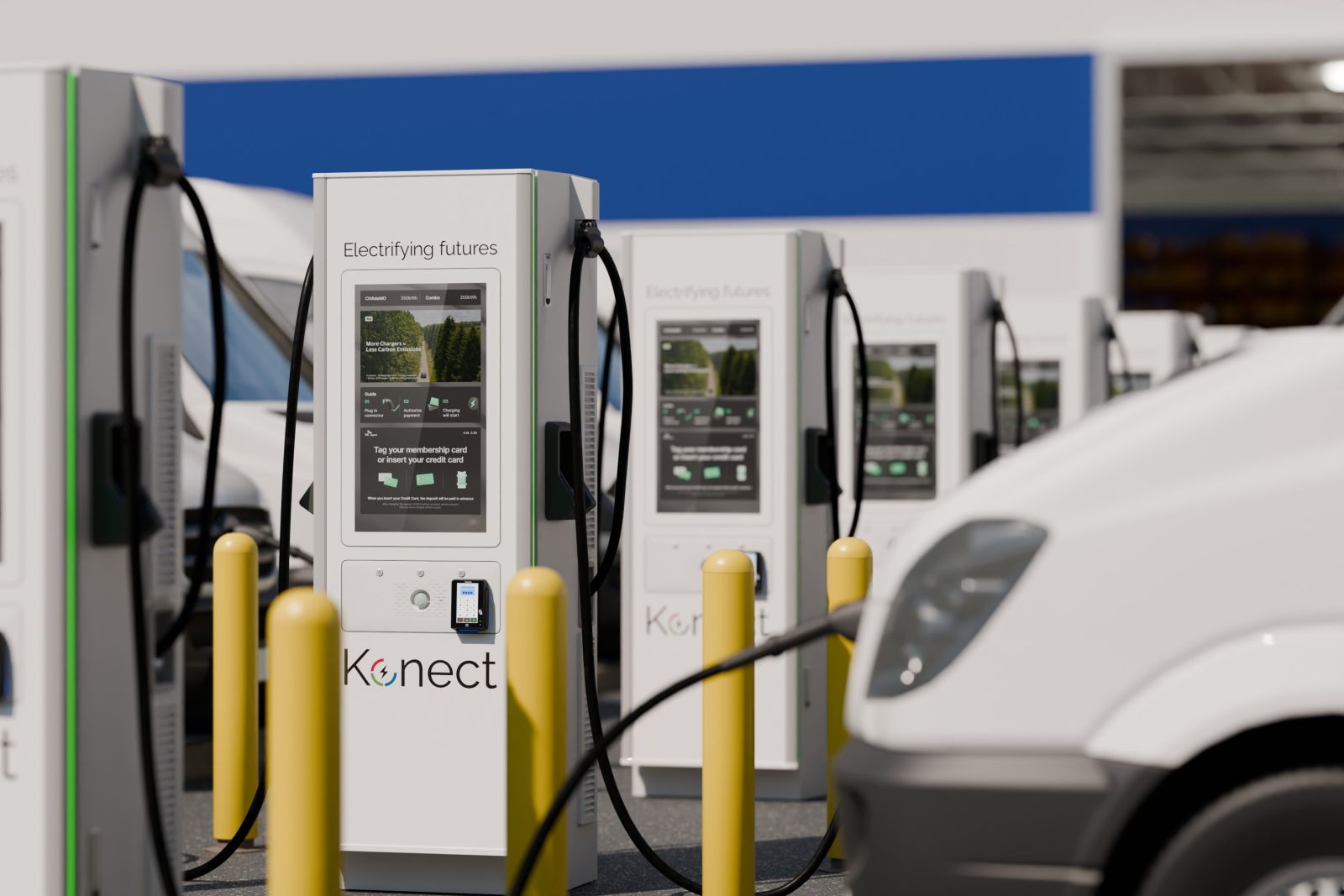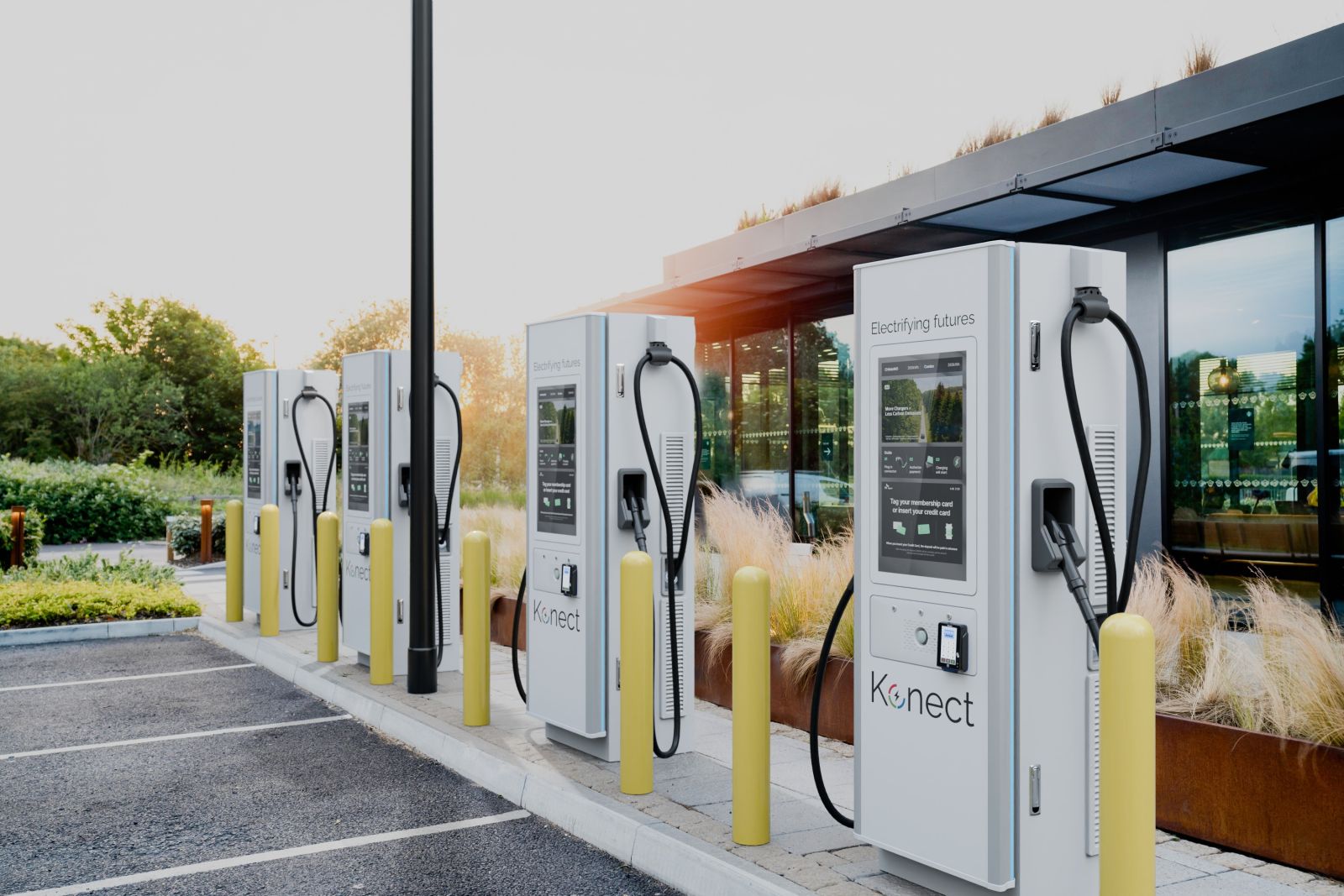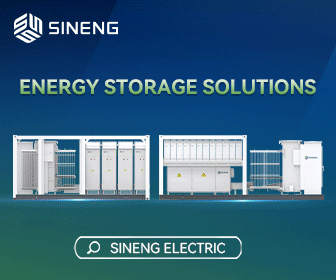Plugging the Gap: How fuel retailers can boost the U.S. EV charging infrastructure
Amidst further charging infrastructure funding announcements and renewed sales growth for battery electric vehicles, the US market is making encouraging steps to level-up electric vehicle adoption. Impending emissions targets for vehicle OEMs, not to mention the critical need for fleets to decarbonize, make this mission more urgent than ever before.
Our work is hindered by roadblocks. As we look to supercharge the electric transition, it’s clear that markets around the world are falling behind in their goals for expanding public charging infrastructure. The status quo in the U.S. is a stark reminder of the progress that needs to be made. It may be the second-largest market for electric vehicles globally, but the latest figures show that there are under 200,000 publicly available charging ports across the country. For context, it’s estimated that the nation would need over a million more by 2030 — a 550 percent increase on what we have available today.

At current rates of infrastructure installation, the industry simply won’t be able to facilitate the transition to electrification sufficiently. Smart solutions are needed; everything from unlocking more funding and feasible financing options for CPOs, to handling local energy-grid limitations effectively.
There are other factors at play, however, that need to be considered. As electric-vehicle uptake increases and EV-driving becomes the norm, the charging experience needs to change. Even now, drivers’ expectations of what’s available at their local charging station are changing; they want an experience that’s as easy as filling up with gas, with equally seamless facilities. Current public charging stations don’t always match these expectations: the lighting might not be good, they might not be easily located, and they might not offer the amenities consumers want to fill the charging time. For a significant cohort of drivers without sufficient home-charging facilities, omissions like these can prove to be a deal-breaker.
While transition to electric mobility is about necessity, equally important is creating a convenient experience for drivers. When taking both of these sides of the coin into account, it’s clear that there is a huge opportunity for fuel retailers to plug the gap; they are located close to major transit routes, offer a familiar experience to drivers, and provide the necessary amenities. This vast potential is starting to be realized, with 68 percent of National Electric Vehicle Infrastructure (NEVI) funding applications being won by fuel retailers.

Of course, it’s critical to also recognize the challenges that fuel retailers face in this transition — presenting blockers to effective service, and to building a business-case for reliable and profitable EV charging. In a recent survey of fuel retailers, common concerns included price competition (89 percent), keeping pace with changing technology (86 percent), and maintaining service levels (82 percent). Meanwhile, high investment costs (40 percent), uncertain ROI (29 percent), and complicated installations (28 percent) were the most common barriers among retailers who have yet to invest in charging.
To help fuel retailers realize their incredible potential and facilitate a successful transition, the industry needs to ensure that the right support and technical expertise is readily available. For example, at the outset, these retailers not only need to know how to determine the quantity of chargers they install, but also how to assess their local energy-grid capacity to calculate the most efficient model for their offering.
This feeds into the need to make the whole enterprise profitable; retailers need dependable chargers, maintenance, and servicing to maximize charger uptime. They also need to identify new and intelligent revenue streams to build a robust business-case. That comes from integrating the whole charging and retail ecosystem — building a fully end-to-end, ‘watts-to-wheels’ journey. A model such as this gives retailers the opportunity to enhance revenue via carbon credits, selling stored energy back to the grid, and effectively monetizing the longer dwell times seen with EV charging by encouraging customers into the C-store.
The gap in electric-vehicle charging infrastructure may well be a critical challenge for the automotive industry to solve, but it also provides an exciting opportunity to reimagine charging and fuel retail for a new era. By helping fuel retailers evolve and make a successful, profitable transition to electrification, the industry can unlock an invaluable opportunity to supercharge infrastructure installation, and ensure it’s a fit for purpose in a clean-mobility future.
Om Shankar is Vice President and General Manager at Konect, a turnkey EV charging solution by Gilbarco.
Gilbarco | www.gilbarco.com
Author: Om Shankar
Volume: 2024 November/December











